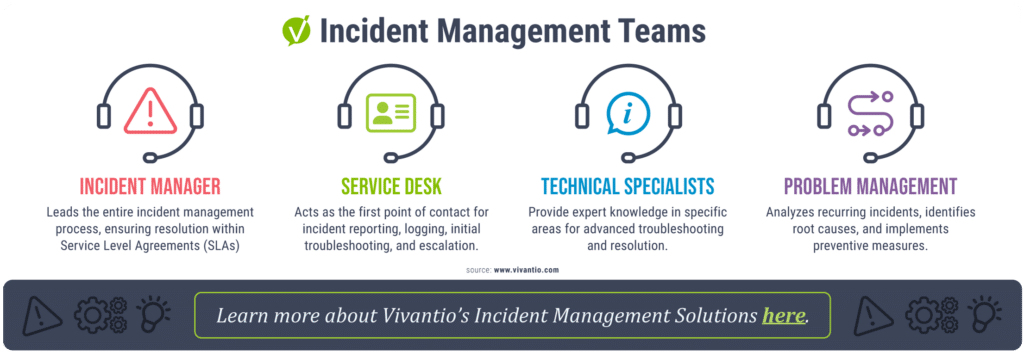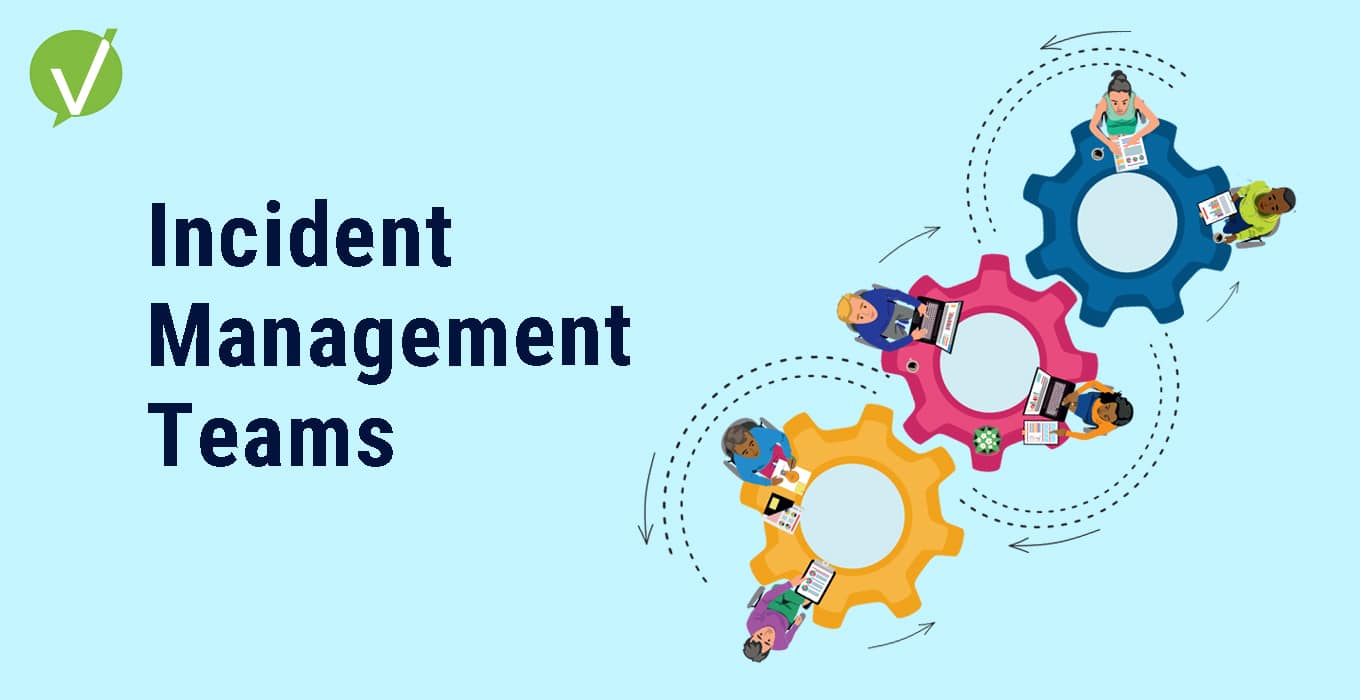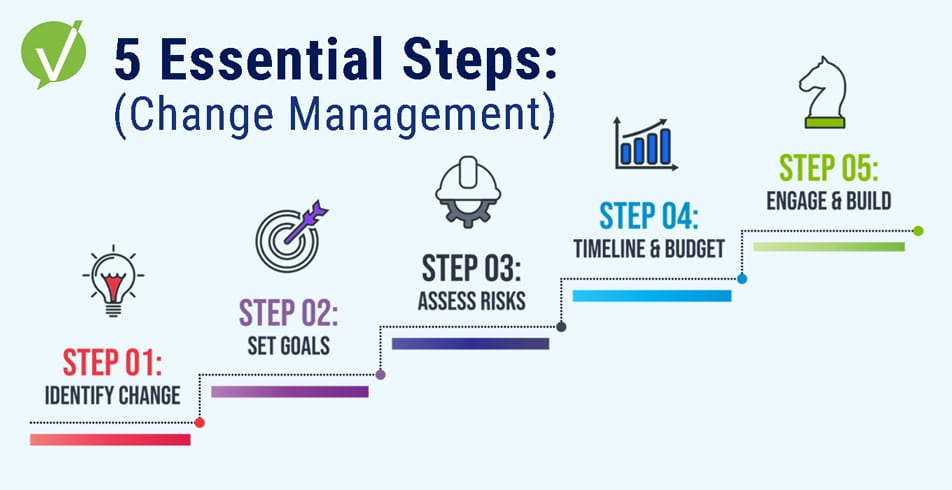Boost Your ITSM Efficiency with an Incident Management Team
Introduction
When it comes to effective IT Service Management (ITSM), having a dedicated Incident Management Team can make all the difference. This team plays a crucial role in streamlining incident responses, minimizing downtime, and ultimately boosting your overall ITSM efficiency.
An Incident Management Team is a group of skilled professionals who are specifically trained to handle and resolve IT incidents promptly and effectively. They are responsible for managing the entire incident management process, from initial identification to resolution.
Tired of slow incident response and disrupted operations?
Boost your ITSM with a skilled Incident Management Team, trained to tackle IT issues head-on and minimize downtime.
Here’s how they power up your ITSM:
- Swift Response: They handle incidents immediately, minimizing impact on your business.
- Prioritized Resolution: They escalate and prioritize incidents based on severity, ensuring critical issues get addressed first.
- Best Practices: They follow standardized procedures, guaranteeing consistent and efficient incident resolution.
- Collaboration: They work closely with your service desk and stakeholders, keeping everyone informed and involved.
- Problem Prevention: They analyze incidents to identify root causes and prevent future occurrences.
Empower your ITSM with a dedicated Incident Management Team, the frontline heroes ensuring your business thrives. They work tirelessly to deliver swift responses, prioritize critical issues, and implement best practices. This collaborative team not only resolves problems efficiently but also proactively prevents them, minimizing downtime and maximizing productivity.
Prioritizing Roles and Responsibilities in the ITSM Incident Management Team
Within the realm of IT Service Management (ITSM), an Incident Management Team plays a critical role in ensuring quick and efficient resolution of issues. This section will highlight the key roles and responsibilities within an Incident Management Team. Delve into the incident management process and explore best practices for incident response.
Key Roles and Responsibilities:
- Incident Manager: Leads the entire incident management process, ensuring resolution within Service Level Agreements (SLAs).
- Service Desk: Acts as the first point of contact for incident reporting, logging, initial troubleshooting, and escalation.
- Technical Specialists: Provide expert knowledge in specific areas for advanced troubleshooting and resolution.
Problem Management: Analyzes recurring incidents, identifies root causes, and implements preventive measures.
Supporting Processes and Practices:
- Incident Management Process: A systematic approach for identifying, logging, categorizing, prioritizing, investigating, and resolving incidents.
- Service Management: Ensures consistent and effective incident resolution by aligning with service management principles and processes.
- Handling Major Incidents: Coordinating and managing major incident response, mobilizing resources, communicating with stakeholders, and escalating to relevant teams.
- Best Practices for Incident Response: Creating an incident response plan, implementing a centralized logging system, establishing communication channels, analyzing incident data, and providing training.
Benefits:
- Quick and efficient incident resolution
- Minimized impact on business operations
- Improved IT service levels
- Reduced downtime
- Proactive identification and prevention of incidents
By prioritizing and clearly defining roles and responsibilities, the Incident Management Team can ensure a streamlined and effective approach to incident management, ultimately leading to a more robust and reliable IT infrastructure.
Best Practices for Incident Response
When it comes to incident response, following industry best practices is crucial for efficient and effective resolution. Some key best practices include:
- Creating an incident response plan that outlines step-by-step procedures for identifying, responding to, and resolving incidents.
- Implementing a centralized incident logging and tracking system to ensure all incidents are recorded and monitored.
- Establishing clear communication channels and escalation paths to facilitate timely updates and resolution.
- Regularly reviewing and analyzing incident data to identify trends and areas for improvement.
- Providing regular incident management training and awareness programs to all relevant stakeholders.
By clearly defining roles, responsibilities, and establishing effective communication channels, an Incident Management Team can ensure a cohesive and efficient incident resolution process, minimizing downtime and optimizing service levels.
Streamlining Incident Resolution with Effective Incident Management.
When it comes to efficiently resolving incidents in your IT infrastructure, effective incident management practices play a crucial role. By implementing a well-defined incident resolution workflow, you can ensure that incidents are promptly addressed and resolved, minimizing their impact on your business operations.
The incident resolution workflow begins with the initial report of an incident. This triggers a series of steps that are designed to streamline the incident management process. As the incident progresses, it may need to be escalated to higher levels of support, such as problem management or major incident management, depending on its severity and complexity.
Timely alerts and notifications are essential in the incident management workflow. They help ensure that the right team members are informed as incidents occur, allowing for immediate action. Alerts can be configured to trigger based on predefined thresholds or specific event types, ensuring that no incident goes unnoticed.
By optimizing your incident resolution workflow and leveraging the power of effective incident management practices, you can minimize downtime and restore services swiftly. This, in turn, enhances your organization’s productivity and customer satisfaction, as incidents are resolved efficiently, keeping your IT systems running smoothly.
Empower Your Incident Management Team: Faster Resolution & Satisfied Customers
Struggling with siloed IT teams and unclear communication, leading to slow incident resolution and frustrated customers? Connect with our expert team and schedule a personalized consultation to discuss your unique needs. Sign up for a free demo and experience the power of Vivantio firsthand. Take control of your incidents today!.














